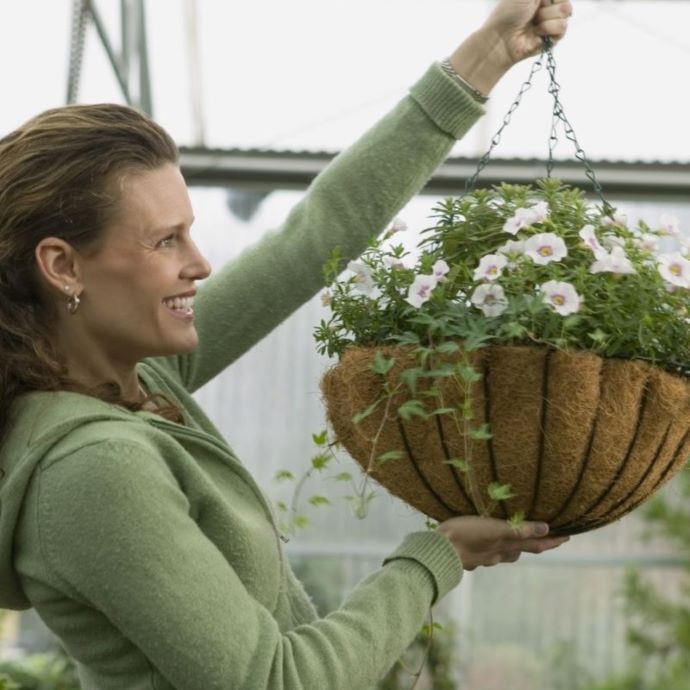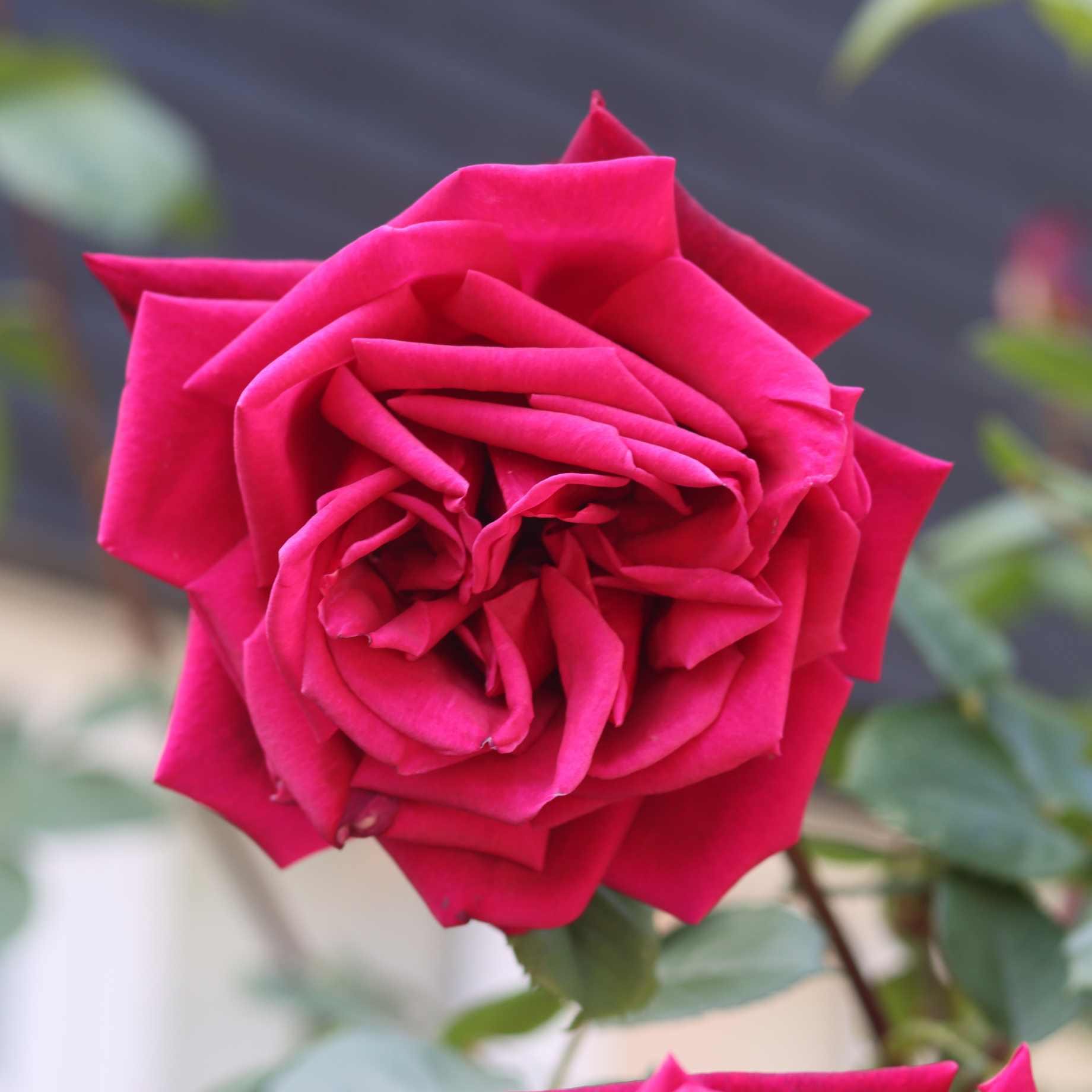Advice & Inspiration
Pruning Roses: A Grower’s Guide
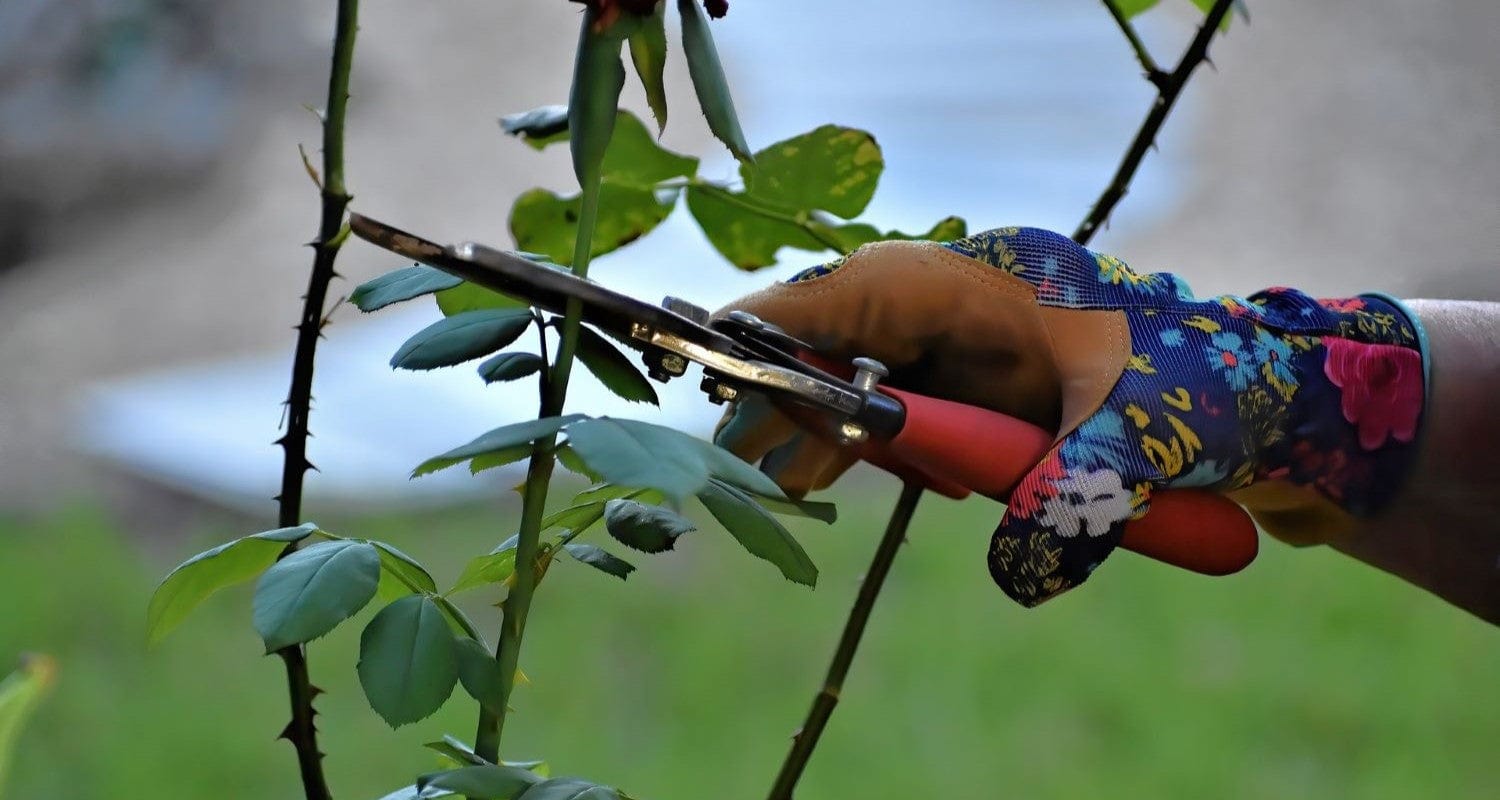
Probably the single most important thing you can do to make your roses healthier, stronger and more productive, pruning can nevertheless be daunting to first time rose growers. Don’t worry! We’re here to help. We’ve put everything you need to know about pruning roses in one place - with expert tips from our specialist rose growers.
Jump to:
- When to prune
- Tools
- Pruning shrub roses
- Pruning floribunda and hybrid tea roses
- Pruning climbing roses
- Pruning rambling roses
- Pruning groundcover roses
- Pruning patio roses
- Deadheading
- Health checking roses
When to prune roses
Most roses should be pruned while they’re dormant (not actively growing) between late winter and early spring. The exception to this is rambling roses, which should be pruned straight after they’ve finished flowering, between August and September.
What tools do you need for rose pruning?
- Pruning shears/secateurs - for small, easy to reach stems.
- Loppers/long handled pruners - for out-of-reach branches on large climbing roses.
- Pruning snips/clean sharp scissors - for deadheading.
- Gloves - to avoid injury from thorny roses.
Wiping your tools after pruning and keeping them sharp gives cleaner cuts which help your roses heal faster. If any of your rose plants are affected by disease, you should clean your tools before moving on to the next one.
Before you start
What kind of roses do you have? Different types may need pruning at different times of the year and in specific ways in order to get the best results.
How to prune shrub roses
Shrub roses are a favourite rose type for any size of garden, with hundreds of varieties including English roses. You’ll usually find them in borders and beds.
In their first year after flowering, shrub roses should have flowering shoots cut back by 7-12 cm and any stems that are crossing over or wildly out of place can be removed.
In the second year you can cut back all the stems by a third and reduce any longer ones to the length of the rest.
In the third year and beyond, cut back by a third unless you want to reduce the size of your plant, in which case you can cut it back by up to a half.
How to prune floribunda and hybrid tea roses
These are types of shrub roses which can benefit from slightly different pruning techniques.
Floribunda roses are compact bush roses with clusters of smaller flowers but more of them, while hybrid tea roses have large, fragrant flowers held alone on straight stems.
With both types, you should first cut out any dead, diseased or crossing stems. If the centre of the plant is crowded, you can also cut out some of the old shoots to open it up and allow more airflow. In the first year, prune them like shrub roses (as above) then prune the different types as follows from the second year onwards.
Pruning floribunda roses
Prune the strongest stems to about 25cm from soil level, then cut back the weaker ones a little more severely. As your rose matures, you can cut back any older, woody stems to about 5-6cm from soil level, which will encourage new young shoots to grow.
Pruning hybrid tea roses
Prune the strongest stems back to about 10-15cm from the base (about 4-6 buds) to where you can see the start of the previous year’s growth. Then cut back the weaker stems to about 5-10cm from the base.
What if I don’t know what kind of shrub rose it is?
It happens. You move house, you find a random rose the previous people left behind, the label’s been shredded by a strimmer, the plant ID app is mystified. Don’t worry - prune it as you would a floribunda and you won’t go far wrong.

How to prune climbing roses
Climbing roses have large or clustering flowers on vigorous twining stems that can reach 6m in height. They grow quickly, blooming repeatedly throughout summer and early autumn.
In the first year after flowering, prune away any stems that are growing away from the structure and can’t be tied in.
In the second year and beyond, repeat this step and if your rose is getting very vigorous, you can also cut away some of the weaker growth. Prune out old flowering stems to around 15cm from the main stem.
For both kinds of rose, you should also prune out all dead, damaged or diseased parts of the plant and remove any remaining leaves each year. Don’t worry if your rose looks a little bare - it will come back stronger and healthier in the spring.
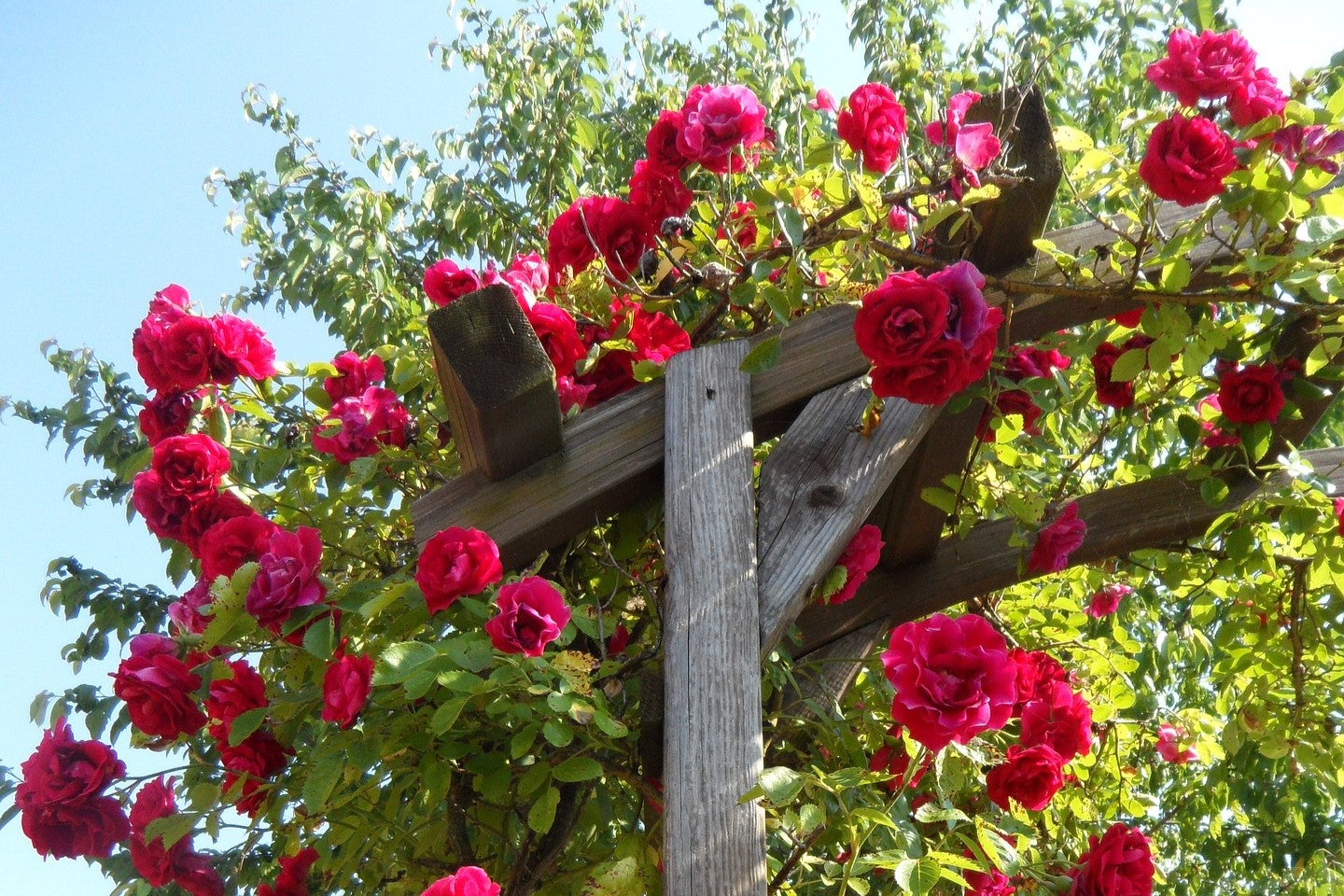
How to prune rambling roses
Where climbing roses tend to grow (roughly) in one direction, ramblers go all over the place! They’re often found on walls, structures or scrambling through tree branches. They flower just once a year - usually in June - but it’s pretty spectacular when they do.
Pruning should be done as soon as the flowers have finished - August to September is best. As they flower on the previous couple of seasons’ growth, you should cut out the oldest stems that have flowered when pruning. This avoids your plant turning into a dead looking tangle of old wood like you’ll sometimes see when rambling roses are neglected, and encourages fresh new stems to grow.
What’s the difference between a climbing and rambling rose?
The easiest way to tell the difference is to take note of the flowering time. A climbing rose will repeat flower almost all summer and well into autumn, while a rambling rose usually flowers only once, normally around June.

How to prune groundcover roses
Groundcover roses produce flowers all along flexible, low growing stems. They either repeat flower or produce attractive red hips in autumn. They come in two types - shrub types which are small and don’t spread too far and rambling types which can spread anything up to 3m along the ground. For both types, you should first cut out any dead, diseased or crossing stems. If the centre of the plant is crowded, you can also cut out some of the old shoots to open it up and allow more airflow.
Pruning shrub type groundcover roses
You don’t really have to prune these types unless they grow too big for the space they’re in. If this happens, prune the upward growing stems down to the height you want them, usually reducing them by about a third, then prune the sideshoots back to two or three healthy buds.
If you inherit a very overgrown or scruffy looking groundcover rose (or either type) you can bring it back to life by pruning it down to about 10cm from the base in late winter.
Pruning rambling type groundcover roses
If your groundcover rose is rambling out of control, you can reduce the size by pruning down the sideshoots after it flowers in summer or early autumn - these can be cut back to two or three healthy buds or left slightly longer.
How to prune patio and miniature roses
Patio shrub roses are bushy, compact plants with clusters of small flowers. Miniature (or dwarf) roses are even smaller, growing to around 45cm at maturity. Both are usually grown in pots.
Pruning patio roses
These are pretty low maintenance - make sure you don’t prune them too much in the first couple of years, then prune them as you would a full sized floribunda. Cut out any dead or woody looking stems, then reduce the biggest stems by about a third, cutting back to a healthy bud. You can also keep the plant to a compact height and good shape by removing any wildly straggling upward stems.
Pruning miniature/dwarf roses
Miniature roses don’t need much pruning - especially when they’re new. In fact we’d advise leaving them alone for the first year or two. When you do prune them, simply cut back any weak straggly or dead looking stems. After a few years you can cut back the older growth almost to ground level if it’s starting to look a bit woody - this will reinvigorate it and encourage new growth.
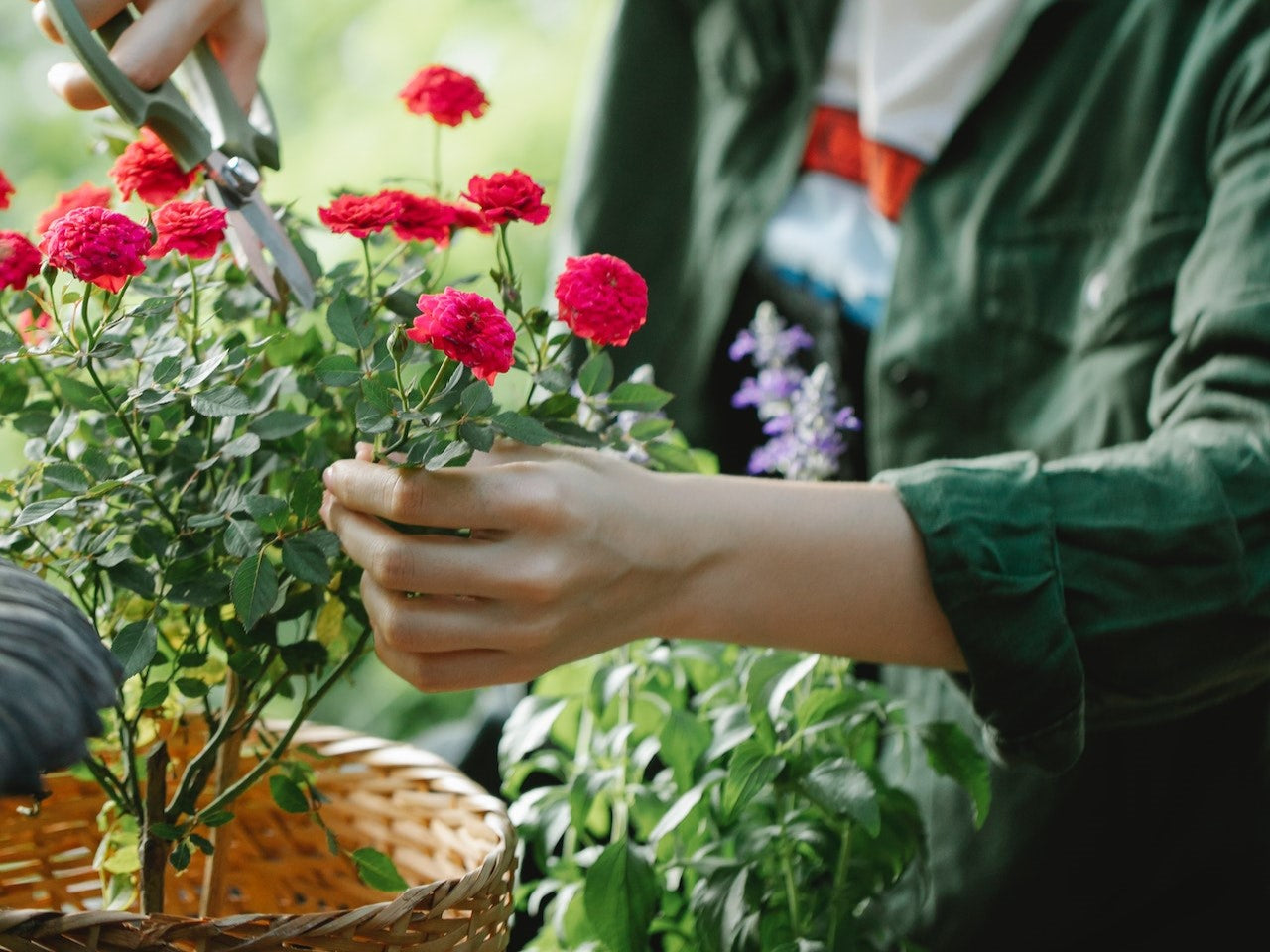
What is deadheading?
Deadheading is perhaps the most important (and easiest) part of rose pruning, and simply means cutting off the flower heads after they’re past their best. To do this, simply snip off the seed heads that are left behind when the flower dies, cutting the stem just below the rounded part. “It’s essential to encourage a long season of flowers,” says Jack. By doing this, you’ll prevent the plant growing seed heads (hips), enabling it to put its energy into growing more flowers!

While you’re pruning…
It’s a good opportunity to look out for the signs of pests and diseases so you can stop them in their tracks. See our rose pests and diseases guide for more.




